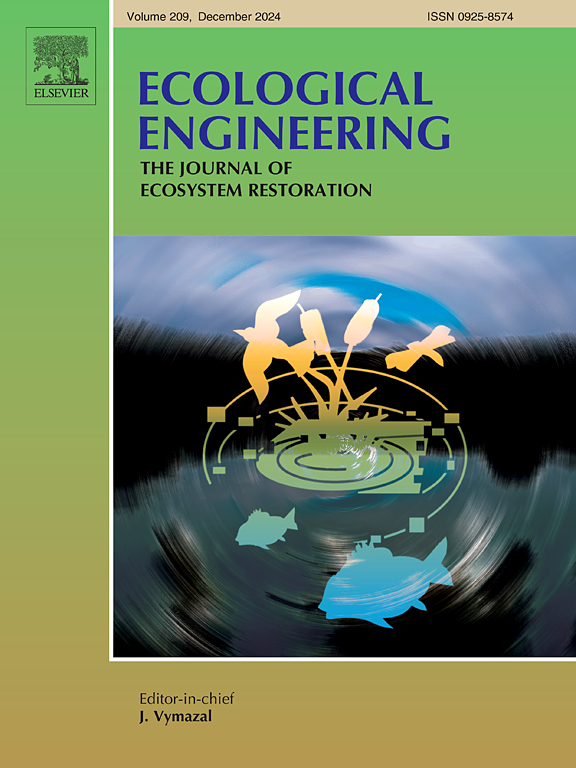Novel settlement substrates for European flat oyster (Ostrea edulis) restoration
IF 3.9
2区 环境科学与生态学
Q1 ECOLOGY
引用次数: 0
Abstract
The flat oyster Ostrea edulis L., once common in the North Sea, declined rapidly due to intensive fisheries in the late 19th century and disease outbreaks at the beginning of the 20th century and is now listed as ‘threatened’ or ‘declining,’ with restoration of oyster beds now included in European directives and national plans. For oyster restoration, availability of suitable substrate is required to ensure successful settlement of oyster larvae. Off-shore windfarms are good candidates for restoration as bottom disturbance is not allowed and hard substrate is present in the form of so-called scour protection. This can provide settlement substrate for oyster larvae. In addition to the rock material that currently makes up the scour protection, studies focus on finding alternative and moldable materials that stimulate settlement. The aim of this study was to identify flat oyster larvae settlement preferences for different substrate materials. Oyster settlement on conventional scour protection rock (granite and eclogite), and currently used sandstone and concrete were compared to new types of scour protection rock (marble and limestone). In addition, three new substrates were included in the tests: a coating based on fine ground oyster shells (BESE-reef paste), substrate made of sandy dredged sediment (Geowall) and a bioinspired glue that binds crushed oyster shell fragments together (SeaCrete). Flat oyster larvae were exposed to the substrates in two hatchery experiments as well as under realistic, challenging field conditions. Flat oyster larvae settled on all substrates, with the lowest spat density on eclogite, granite and Geowall and the highest spat density on the two novel substrates SeaCrete and BESE-reef paste. These results promise to enhance native European oyster bed restoration with limited environmental impact as the novel substrates have low CO2 footprints and make use of wasted shells from the seafood industry.
求助全文
约1分钟内获得全文
求助全文
来源期刊

Ecological Engineering
环境科学-工程:环境
CiteScore
8.00
自引率
5.30%
发文量
293
审稿时长
57 days
期刊介绍:
Ecological engineering has been defined as the design of ecosystems for the mutual benefit of humans and nature. The journal is meant for ecologists who, because of their research interests or occupation, are involved in designing, monitoring, or restoring ecosystems, and can serve as a bridge between ecologists and engineers.
Specific topics covered in the journal include: habitat reconstruction; ecotechnology; synthetic ecology; bioengineering; restoration ecology; ecology conservation; ecosystem rehabilitation; stream and river restoration; reclamation ecology; non-renewable resource conservation. Descriptions of specific applications of ecological engineering are acceptable only when situated within context of adding novelty to current research and emphasizing ecosystem restoration. We do not accept purely descriptive reports on ecosystem structures (such as vegetation surveys), purely physical assessment of materials that can be used for ecological restoration, small-model studies carried out in the laboratory or greenhouse with artificial (waste)water or crop studies, or case studies on conventional wastewater treatment and eutrophication that do not offer an ecosystem restoration approach within the paper.
 求助内容:
求助内容: 应助结果提醒方式:
应助结果提醒方式:


